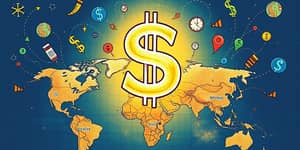
China’s meteoric rise to the world’s second-largest economy has been fueled by an investment-led growth model, transforming cities, industries, and global supply chains. Today, Beijing faces a pivotal moment: balancing its legacy of rapid infrastructure build-outs with a vision for high-quality, consumption-driven growth. For global investors, understanding this shift is essential to navigating risks and seizing opportunities.
From the late 1990s through 2018, China’s real GDP expanded by almost 9.5% annually, driven by record domestic savings and aggressive lending to infrastructure, manufacturing, and real estate. Yet this model now strains under several structural headwinds and diminishing returns.
First, the real estate sector—once accounting for roughly 30% of GDP—has been in a policy-driven downturn since 2021, dragging down investment and consumer confidence. Second, global demand is cooling, with major trading partners less willing to widen deficits. Third, China’s rapidly aging population and low productivity growth further cap potential output.
Beijing’s official forecasts for 2024 claim growth near 5%, but many external analysts estimate actual expansion of only 2.4%–2.8%. The OECD projects 5.0% in 2024, 4.7% in 2025, and 4.3% in 2026—highlighting a gradual moderation from breakneck pace to more stable trajectories.
Achieving a modest recovery in 2025, perhaps up to 4.5%, hinges on successful policy stimuli. Yet without deep reforms—particularly rebalancing toward domestic consumption—a long-term recovery remains elusive. In this context, investors must weigh the uncertainty of policy interventions against the prospects for incremental gains.
Launched in 2015, the "Made in China 2025" initiative aimed for 70% self-sufficiency in advanced industries within a decade. As trade tensions and external pushback grew, China rebranded its strategy under the dual circulation strategy, emphasizing both domestic consumption and selective export leadership.
Today’s phase—often dubbed "Made in China 2.0"—is characterized by AI-augmented manufacturing, green energy integration, and a focus on self-reliance in semiconductors, advanced materials, and robotics. By embedding advanced manufacturing capabilities across sectors, China seeks to lock in competitive advantages and shape global supply chains.
China’s push for self-reliance and capacity expansion has sparked rising trade tensions. The US, EU, and other major economies have imposed tariffs, tightened investment screening, and challenged state subsidies. In sectors like solar panels, batteries, and electric vehicles, China’s policy-driven expansion risks creating supply gluts and pressuring global prices.
These developments are driving a fracturing of supply chains and increased techno-nationalism. Firms and investors must assess the evolving landscape, where resilience and diversification compete with the efficiencies of deep integration in China’s ecosystem.
Foreign direct investment trends reveal both opportunity and caution. Chinese FDI outflows, notably into Belt and Road Initiative countries, reached $15.6 billion in 2018, up 8.9% year-on-year. Meanwhile, state-owned enterprises have ramped up investment to compensate for a stalled private sector, reshaping the competitive environment.
In high-tech domains—AI, electric vehicles, solar energy, robotics—China is emerging as a global leader. This creates reverse dependencies in which multinational companies rely on Chinese technology, components, and production capacities, presenting both risk and opportunity for global investors.
Despite headwinds, opportunities persist in sectors tied to China’s innovation drive. Investments in green energy, AI-enabled hardware, and EV supply chains can benefit from domestic growth policies and global demand for sustainable technologies.
For global investors, China’s transition is neither a simple downturn nor an unstoppable juggernaut. It is a complex recalibration marked by dual challenges of growth moderation and technological ascendance. The path forward will be shaped by policy reforms, demographic trends, and the shifting dynamics of international trade.
Those who engage with nuance—balancing diversification with targeted exposure to leading Chinese technologies—will be best positioned to navigate the coming decade. By asking the right questions and monitoring key indicators, investors can find strategic entry points in an economy that remains central to global growth.
China’s economic shift from an investment-driven powerhouse to a more mature, innovation-focused model presents both risks and rewards. As global investors, success depends on understanding the evolving policy landscape, the pace of structural reforms, and the emerging areas of technological leadership. The story of China’s next chapter will unfold at the intersection of domestic transformation and global integration—making informed engagement more critical than ever.
References













